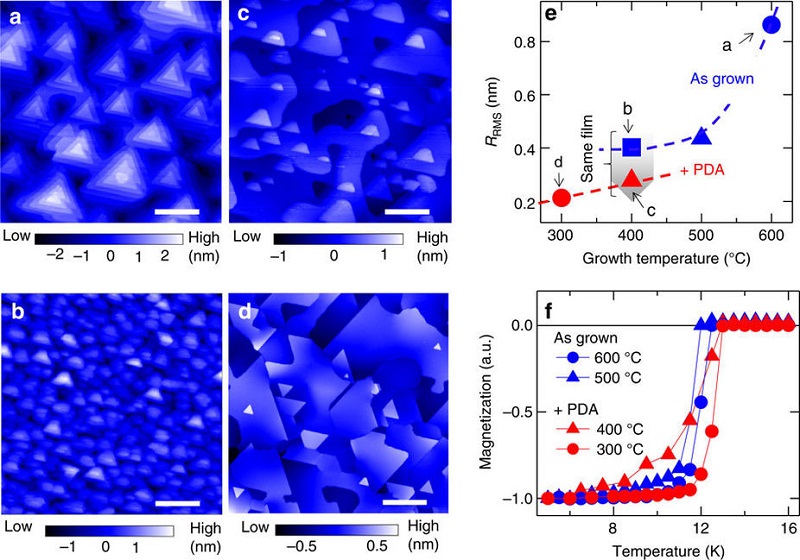Research Abstract
走査型トンネル分光法によるLiTi2O4(111)薄膜表面における超伝導の観測
Scanning tunnelling spectroscopy of superconductivity on surfaces of LiTi2O4(111) thin films
2017年7月3日 Nature Communications 8 : 15975 doi: 10.1038/ncomms15975

LaAlO3/SrTiO3界面に例示される表面/界面における特異な超伝導や、極薄FeSe膜における高い転移温度は、原子や電子の再構成が起こると超伝導にどのような影響が及ぶかに関して活発な議論を引き起こした。立方晶スピネル型酸化物超伝導体LiTi2O4の表面は、電子や原子の固有の表面再構成によって超伝導特性が複雑化するため、もう一つの興味深い系である。しかし、LiTi2O4表面の研究は、単結晶や高品質薄膜を得ることが難しいため阻まれてきた。今回我々は、低温走査型トンネル顕微鏡法/分光法を用いて、LiTi2O4 (111)エピタキシャル薄膜の表面では、予想に反して超伝導エネルギーギャップが小さいことや、コヒーレンス長が長いことを明らかにしたので報告する。さらに我々は、フェルミエネルギーで超伝導ギャップより大きいエネルギースケールで擬ギャップが開いていることを見いだした。今回の結果は、立方晶遷移金属酸化物表面における多体効果の変調と、それに伴う異常な超伝導の発現を探る道を開くものである。
Corresponding Authors
Unique superconductivity at surfaces/interfaces, as exemplified by LaAlO3/SrTiO3 interfaces, and the high transition temperature in ultrathin FeSe films, have triggered intense debates on how superconductivity is affected in atomic and electronic reconstructions. The surface of superconducting cubic spinel oxide LiTi2O4 is another interesting system because its inherent surface electronic and atomic reconstructions add complexity to superconducting properties. Investigations of such surfaces are hampered by the lack of single crystals or high-quality thin films. Here, using low-temperature scanning tunnelling microscopy and spectroscopy, we report an unexpected small superconducting energy gap and a long coherence length on the surface of LiTi2O4(111) epitaxial thin films. Furthermore, we find that a pseudogap opening at the Fermi energy modifies the surface superconductivity. Our results open an avenue for exploring anomalous superconductivity on the surface of cubic transition-metal oxides, where the electronic states are spontaneously modulated involving rich many-body interactions.

